
Planning for a family city break in Berlin? Being the capital and the largest city, it is a must-visit when in Germany. Berlin is easily the biggest city we’ve explored (so far). Five days weren’t enough to cover all the must-see attractions in this culturally-rich city.
Berlin is a vibrant and diverse city with a rich history, a thriving cultural scene, and a unique blend of old-world charm and modernity. It is renowned for its museums, galleries, and theaters, making it a hotspot for art enthusiasts. The city hosts numerous music festivals, film festivals, and cultural events throughout the year. Despite its modernity, Berlin is also known for its green spaces, parks, and gardens. The Tiergarten, a large urban park in the city center, is a popular spot for locals and tourists alike to relax and enjoy outdoor activities. It also boasts an efficient public transportation system, including buses, trams, and an extensive subway network (U-Bahn and S-Bahn), making it easy to navigate the city.
Here are some of the best things to see and do when in Berlin:
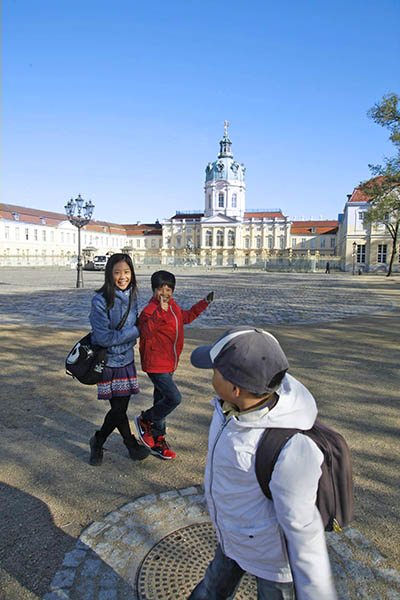
Table of Contents
Brandenburg Gate
One of the most iconic symbols of Berlin, the Brandenburg Gate is an 18th-century neoclassical monument that once marked the entrance to the city. It’s now a symbol of unity and stands at the end of the famous Unter den Linden boulevard.
Berlin Wall
Although much of the Berlin Wall has been demolished, some sections remain as a reminder of the city’s divided past. The East Side Gallery, a 1.3 km-long section of the Wall, is covered in vibrant murals and graffiti and is a must-visit.
Reichstag Building
This historic building houses the German Parliament. The glass dome on top offers fantastic views of the city and has become a popular tourist attraction.
Alexanderplatz
Alexanderplatz, often referred to simply as “Alex,” is a famous public square and transportation hub located in the heart of Berlin. It holds significant historical importance and is one of the city’s most bustling and vibrant areas. Here’s a description of Alexanderplatz and some of its main attractions:
Public Square: Alexanderplatz is a large open square surrounded by various buildings, shops, restaurants, and entertainment venues. It has been a central meeting point in Berlin for centuries and continues to be a popular gathering place for locals and tourists alike.
Berlin City Hall (Rotes Rathaus): Head towards Alexanderplatz to see the impressive Red Town Hall, the seat of the city’s government.
Television Tower (Fernsehturm): Dominating the skyline of Alexanderplatz is the Berlin Television Tower, also known as Fernsehturm. This iconic landmark is one of the tallest structures in Germany, standing at over 360 meters (1,181 feet) tall. Visitors can take an elevator to the observation deck, located at 203 meters (666 feet), to enjoy panoramic views of the city.
World Clock (Weltzeituhr): Adjacent to the Television Tower, you’ll find the World Clock, a popular meeting point for both locals and tourists. The clock displays the current time in multiple cities around the world.
Shopping: Alexanderplatz is a shopper’s paradise, with a multitude of department stores and shopping malls in the vicinity. The most notable one is the massive Alexa Shopping Center, offering a wide range of stores, boutiques, and food options.
Fountain of International Friendship (Brunnen der Völkerfreundschaft): This large fountain, located at the center of the square, is a striking piece of socialist architecture and a remnant of the city’s East German era. It features a bronze sculpture depicting children from different nations dancing together.
Park and Green Spaces: Surrounding the main square, there are various green spaces and parks where visitors can relax and enjoy some downtime. The nearby Volkspark Friedrichshain and the small park at the base of the Television Tower are popular spots for locals to unwind.
Transport Hub: Alexanderplatz is one of the most important transportation hubs in Berlin, served by multiple S-Bahn (commuter train) lines, U-Bahn (subway) lines, trams, and buses. This makes it easy to access other parts of the city from this central location.
Cultural Events: Throughout the year, Alexanderplatz hosts various events and festivals, including Christmas markets during the holiday season and open-air concerts and exhibitions in the warmer months.
Neptune Fountain (Neptunbrunnen): Walk towards Alexanderplatz to find the Neptune Fountain, a grand sculpture featuring the Roman god Neptune surrounded by sea creatures. It’s a popular spot for photos and a gathering point for locals and tourists.
Aquadom and SeaLife Berlin
Aquadom Berlin is a unique and captivating attraction located within the Radisson Blu Hotel, Berlin. It is a massive cylindrical aquarium, known for being the largest freestanding cylindrical aquarium in the world. The Aquadom is a fascinating combination of marine life exhibit and architectural wonder, offering visitors an immersive and unforgettable experience.
The Aquadom is located in the hotel’s lobby and is hard to miss due to its impressive size and visibility. It stands at an astonishing height of about 25 meters (82 feet) and has a diameter of approximately 11 meters (36 feet). The cylindrical tank is made of acrylic glass, providing an unobstructed view of the marine environment inside.
SeaLife Berlin is a fascinating aquarium located in the heart of Berlin. As part of the renowned SeaLife chain, it offers visitors an immersive and educational experience, allowing them to explore the mesmerizing underwater world and learn about marine life from various ecosystems. The aquarium is home to a diverse range of marine creatures, from colorful tropical fish to majestic sea turtles and awe-inspiring sharks.
Upon entering SeaLife Berlin, visitors are welcomed into an interactive journey through different themed zones. One can walk through a transparent tunnel, surrounded by water, where sharks and rays glide gracefully overhead, creating a thrilling sensation of being submerged in the ocean. The aquarium also houses tanks with different types of coral reefs, each showcasing a variety of marine species and their unique habitats.
Throughout the facility, informative displays provide insights into marine conservation efforts and the challenges faced by the world’s oceans. Visitors can gain a deeper understanding of the importance of preserving marine ecosystems and the impact of human activities on these delicate environments.
Charlottenburg Palace
This exquisite palace is the largest in Berlin and serves as a magnificent example of Prussian architecture and opulent interior design.
Charlottenburg Palace, also known as Schloss Charlottenburg, is a stunning Baroque-style palace located in the Charlottenburg district of Berlin. It is the largest royal palace in the city and a testament to the grandeur of Prussian architecture and design.
The palace was originally built in the late 17th century as a summer residence for Queen Sophie Charlotte, the wife of King Frederick I of Prussia. Over the years, it underwent expansions and renovations, resulting in the magnificent structure we see today. The palace complex includes the Old Palace, the New Wing, the Belvedere, and the Orangery.
Visitors to Charlottenburg Palace can explore lavishly decorated rooms, opulent ballrooms, and beautifully landscaped gardens. Some of the main highlights include the opulent Porcelain Cabinet, the grand White Hall, the magnificent State Apartments, and the intimate Royal Porcelain Chamber.
The pond and gardens surrounding the palace offer a serene and picturesque setting, with neatly trimmed hedges, fountains, and sculptures. The New Wing, which was added later, houses a splendid collection of art and artifacts, including paintings, furniture, and porcelain from various periods.
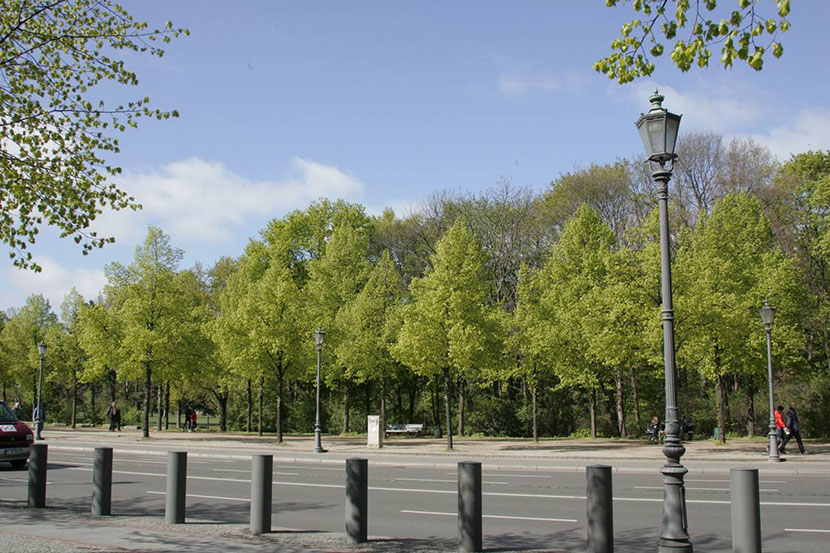
Memorial to the Murdered Jews of Europe (Holocaust Memorial)
The Memorial to the Murdered Jews of Europe, also known as the Holocaust Memorial, is a somber and powerful monument located in the heart of Berlin, Germany. It serves as a memorial to the millions of Jewish victims who lost their lives during the Holocaust, as well as a reminder of the atrocities committed during this dark period of history.
The memorial was designed by architect Peter Eisenman and was officially opened to the public on May 10, 2005. It covers a significant area of approximately 19,000 square meters (nearly 5 acres) and is situated near the Brandenburg Gate and the Reichstag building, adding to its historical and symbolic significance.
The design of the memorial is simple yet evocative. It consists of 2,711 concrete slabs, or stelae, arranged in a grid pattern, varying in height and creating an undulating ground that visitors can walk through. The concrete stelae are gray in color and range from knee height to over 4 meters (13 feet) tall, creating a disorienting and solemn atmosphere as visitors move through the maze-like structure.

The Memorial to the Murdered Jews of Europe also includes an underground information center, known as the “Place of Information.” This center provides historical context, documents the stories of Holocaust victims, and offers further insights into the atrocities committed by the Nazi regime. It serves as an educational resource to ensure that future generations understand and remember the horrors of the Holocaust, emphasizing the importance of never forgetting the past to prevent similar tragedies in the future.
Visiting the Holocaust Memorial is a poignant and reflective experience. It is a place of remembrance, mourning, and respect for the millions of innocent lives lost during one of the darkest chapters in human history. The solemnity of the site serves as a powerful reminder of the importance of promoting tolerance, understanding, and unity in our global community.
Checkpoint Charlie
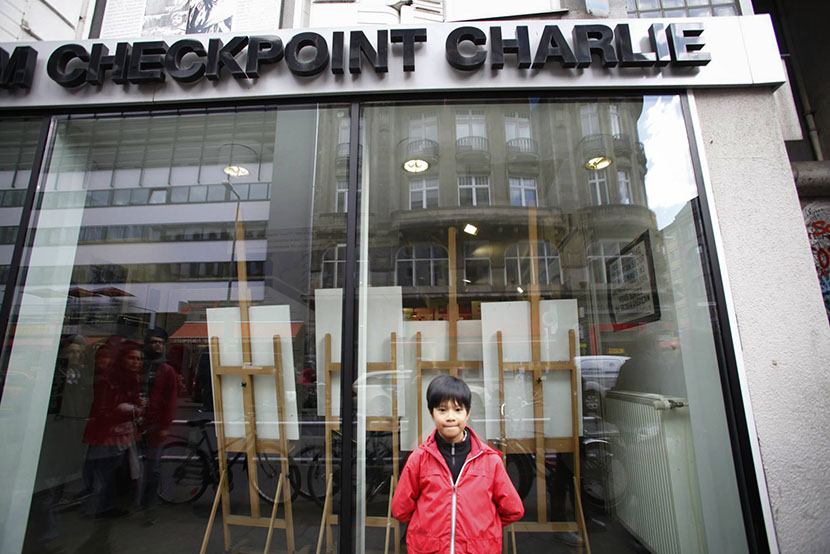
Checkpoint Charlie was one of the most famous border crossing points between East and West Berlin during the Cold War. It was located on Friedrichstraße, and its name came from the NATO phonetic alphabet, where “C” stands for Charlie. This crossing point was a significant symbol of the division between East and West Germany and the ideological conflict between the Eastern Bloc and the Western Allies.
Today, Checkpoint Charlie is a popular historical site and museum, attracting tourists interested in learning about Berlin’s Cold War history. At the former border crossing, a replica of the guardhouse and a sign reading “You are leaving the American sector” mark the spot. Actors dressed as military police often pose for photographs with visitors, adding to the atmosphere.
The Checkpoint Charlie Museum (Mauermuseum) nearby provides a comprehensive exhibition on the history of the Berlin Wall and daring escape attempts made by East Berliners to cross into the West. It houses artifacts, photographs, and stories that offer insight into the intense political and social climate of the time. The area surrounding Checkpoint Charlie is a reminder of the city’s tumultuous past and its subsequent reunification.
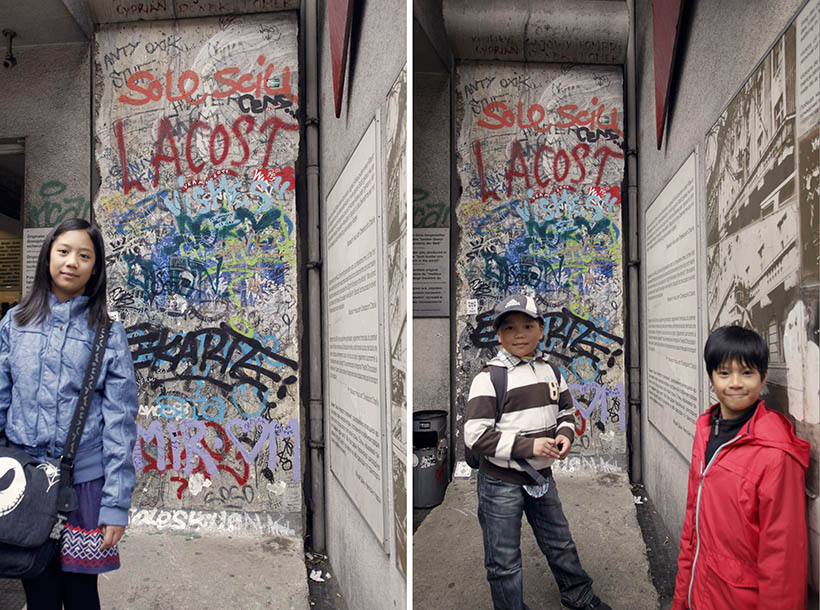
River Spree
Berlin Cathedral (Berliner Dom):
Berlin Cathedral, also known as Berliner Dom, is a stunning and historically significant landmark located in the heart of Berlin. It is one of the city’s most prominent buildings, with a distinctive Baroque and Renaissance architectural style. Visitors can climb to the top for panoramic views of the city. The Berlin Cathedral features a striking design with its large copper dome and numerous towers. Its impressive façade is adorned with sculptures, intricate carvings, and decorative elements that showcase the grandeur of the building.
Inside the Berlin Cathedral, visitors can admire the opulent interiors, including stunning mosaics, elaborate stained glass windows, and richly decorated altars. The marble and stone work create a sense of grandeur and elegance. For those seeking spectacular views of Berlin’s cityscape, a visit to the dome’s viewing platform is a must. The platform offers panoramic vistas of the city, including iconic landmarks such as the TV Tower and Museum Island.
Museum Island (Museumsinsel)
Just a short walk from the Berlin Cathedral, Museum Island is a UNESCO World Heritage site and home to several world-class museums. You can explore the Pergamon Museum, Neues Museum, Bode Museum, Altes Museum, and Alte Nationalgalerie, which collectively house an impressive collection of art and historical artifacts.
Lustgarten
Adjacent to the Berlin Cathedral, Lustgarten is a beautifully landscaped park offering a pleasant place to relax and enjoy the view of the cathedral and surrounding buildings.
Altes Palais
Located on the Museum Island, Altes Palais is a historic building that once served as a palace and now houses various exhibitions and events.
Berlin City Palace (Stadtschloss)
On the opposite side of the river from the Berlin Cathedral, you’ll find the Humboldt Forum, a reconstructed building that combines historical architecture with modern elements and serves as a cultural center with museums, exhibition spaces, and events.
Spree River Cruises
Consider taking a relaxing boat cruise along the River Spree. Cruises offer a unique perspective of the city’s landmarks, including the Berlin Cathedral.
Nikolaiviertel (Nicholas’ Quarter)
Discover Berlin’s oldest residential area with its cobblestone streets, charming houses, and quaint shops. The area around Nikolaikirche (St. Nicholas’ Church) is particularly picturesque.
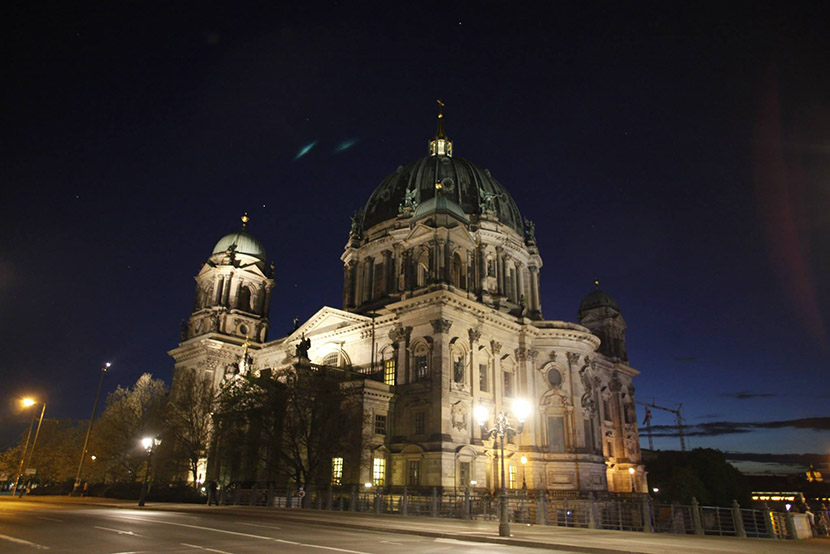
Potsdamer Platz
Once a bustling square before World War II, Potsdamer Platz is now a modern architectural marvel with skyscrapers, shopping malls, theaters, and restaurants.
Gendarmenmarkt
One of Berlin’s most beautiful squares, Gendarmenmarkt is flanked by three impressive buildings: the Konzerthaus (Concert House), the French Cathedral, and the German Cathedral.
Where and What to Eat When in Berlin
Berlin, as a diverse and multicultural city, offers a rich culinary scene with a wide variety of delicious dishes from different cuisines. During our visit, we were surprised that a lot of Vietnamese restaurants were around. Dunkin’ Donuts also sprouted like mushrooms, much to hubby’s delight. There are a lot of foodcourts/malls, Markts (food markets), kiosks, and restaurants all around. Here are some to check out:
Hackescher Markt: This vibrant square is a hub of culture, entertainment, and shopping. It’s a great place to explore cafes, restaurants, boutiques, and galleries.
Markthalle Neun : Located in the Kreuzberg neighborhood, Markthalle Neun is a historic market hall that hosts a popular street food market every Thursday and Friday evenings, and on Saturdays. You can find a wide array of international food stalls offering delicious dishes from all over the world.
Arminius-Markthalle : A a historic market hall located in the Moabit neighborhood of Berlin. Built in the late 19th century, the market hall has a charming and nostalgic atmosphere, reflecting Berlin’s architectural heritage. The hall was originally designed to accommodate a market for fresh produce and food vendors. Over the years, it has evolved into a popular destination for food lovers and enthusiasts of local and international cuisine.
Quartier 206 : Quartier 206 is a high-end shopping complex located in the Friedrichstadt neighborhood of Berlin, situated along Friedrichstrasse, one of the city’s prime shopping streets. The complex is known for its luxurious and exclusive shopping experience, housing a carefully curated selection of prestigious international fashion brands, boutique shops, and upscale designer stores.
Boulevard Berlin : Boulevard Berlin is a shopping center located in the Steglitz-Zehlendorf district of Berlin. It is situated in one of the city’s bustling commercial areas and is a popular destination for shopping enthusiasts, especially those residing in the southern parts of Berlin.
Bikini Berlin : Bikini Berlin is a unique concept shopping mall located in the City West area of Berlin, near the famous Kurfürstendamm boulevard. Unlike traditional shopping centers, Bikini Berlin focuses on innovative and independent retailers, designers, and concept stores, making it a hub for creative and cutting-edge fashion, design, and lifestyle products.
Monsieur Vuong: This Vietnamese restaurant in Mitte is well-known for its fresh and tasty Vietnamese dishes. The pho and other traditional dishes are highly recommended.
Doyum Grillhaus: If you’re craving Turkish cuisine, Doyum Grillhaus in Neukölln is a fantastic choice. They offer delicious grilled meats and a variety of flavorful Middle Eastern dishes.
Lutter & Wegner: For a taste of classic German cuisine, Lutter & Wegner in Charlottenburg is a great option. They serve traditional dishes such as Wiener Schnitzel and sausages in a cozy and charming setting.
When visiting Berlin, here are some must-try foods to savor and explore:
- Currywurst: One of Berlin’s most iconic street foods, currywurst is a grilled or fried sausage (often pork or beef) served with a ketchup-based curry sauce and sprinkled with curry powder. It’s typically accompanied by fries or bread. (Do not miss Curry 36‘s most famous offerings.)
- Döner Kebab: Berlin is famous for its Turkish influence, and döner kebab is a popular fast food option. It consists of roasted meat (usually lamb, chicken, or beef) served in a flatbread with salad, sauces, and sometimes fries.
- Berliner Pfannkuchen (Berliners): These are Berlin’s version of jelly-filled doughnuts, often enjoyed as a sweet treat, especially during the carnival season.
- Eisbein: A traditional German dish, Eisbein is a boiled or pickled pork knuckle, often served with sauerkraut, potatoes, and mustard.
- Schnitzel: This classic German dish features a breaded and fried meat cutlet, usually made from pork (Schweineschnitzel) or veal (Wiener Schnitzel).
- Kartoffelsalat (Potato Salad): The German potato salad is a side dish made with potatoes, onions, and a tangy dressing, often served with various meat dishes.
- Boulette: Also known as Frikadelle, Boulette is a German-style meatball made from a mixture of ground meat, onions, and spices, typically served with potatoes or bread.
- Bretzel (Pretzel): Soft, chewy, and delicious, pretzels are a popular German snack, often enjoyed with mustard.
- Kartoffelsuppe (Potato Soup): This hearty and comforting soup is made with potatoes, vegetables, and sometimes bacon or sausage.
- Spätzle: A type of soft egg noodle, spätzle is often served as a side dish or with a creamy sauce, and it pairs well with meat dishes.
- Bockwurst and Bratwurst: Berlin offers an array of sausages. Bockwurst is a mild, lightly smoked sausage, while Bratwurst is a flavorful, grilled sausage, both typically served with mustard.
- Apfelstrudel: A delicious dessert made with thinly sliced apples, cinnamon, sugar, and pastry, often served with vanilla sauce or ice cream.
- Weisswurst: Although more common in southern Germany, Weisswurst is a traditional Bavarian sausage made from minced veal and pork back bacon, seasoned with parsley, lemon, mace, onions, ginger, and cardamom.
The city’s culinary diversity is one of its many highlights, and you’re sure to find something to suit your taste buds during your visit.
—
Berlin is a fascinating city with a rich history and a vibrant urban landscape that offers a great experience for walkers and explorers alike. Walking around Berlin gives you the opportunity to stumble upon local cafes, restaurants, and street food stalls where you can try traditional German dishes or indulge in international cuisine from all over the world. Berlin has several pedestrian zones and boulevards where cars are restricted, making it safe and enjoyable for pedestrians to explore without worrying about traffic.
Each Berlin district has its own character and charm. From the trendy and artsy vibe of Prenzlauer Berg to the historic streets of Mitte, you can explore diverse neighborhoods with their distinctive atmospheres. It is indeed a big city, but Berlin’s well-connected public transportation system also makes it convenient to take a stroll in one area and then hop on a train or bus to explore another part of the city. Yes, it is very doable to go around with ease.
|
|
|


















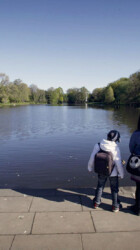












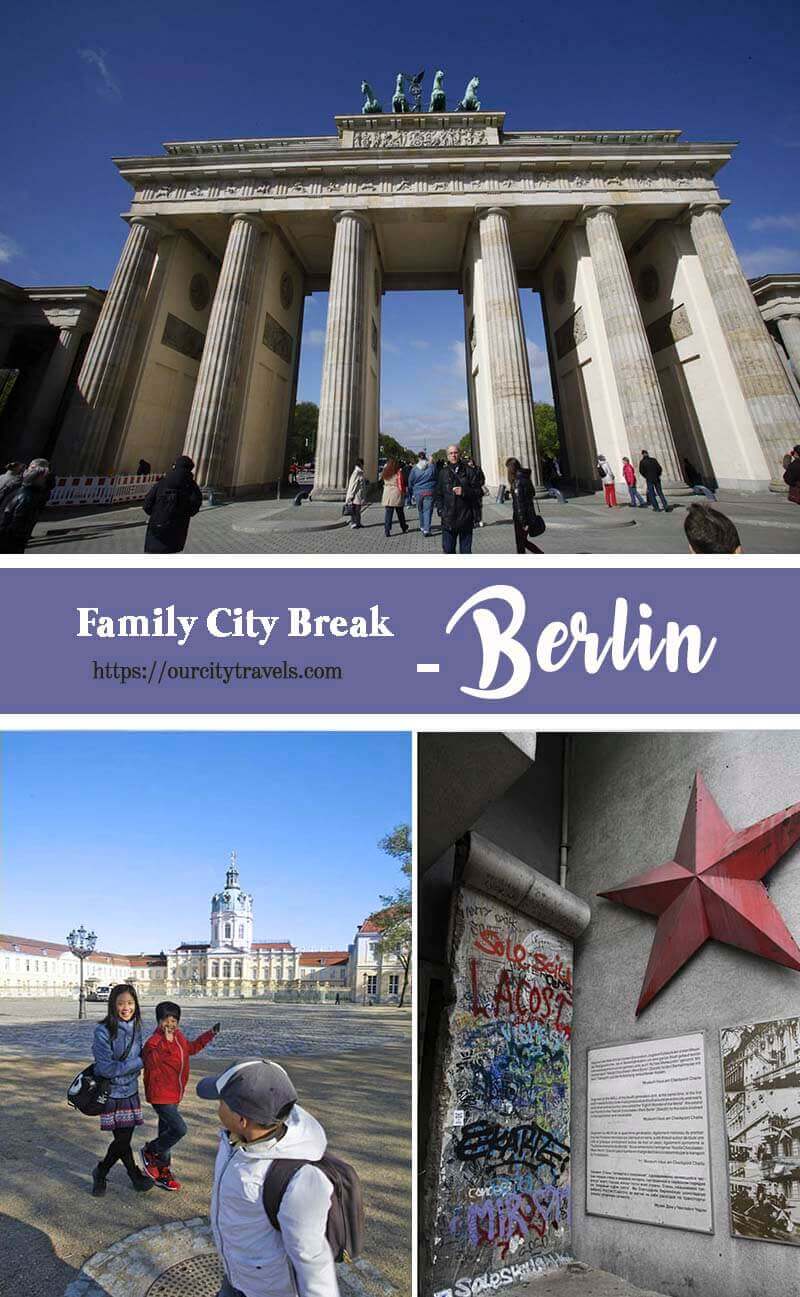
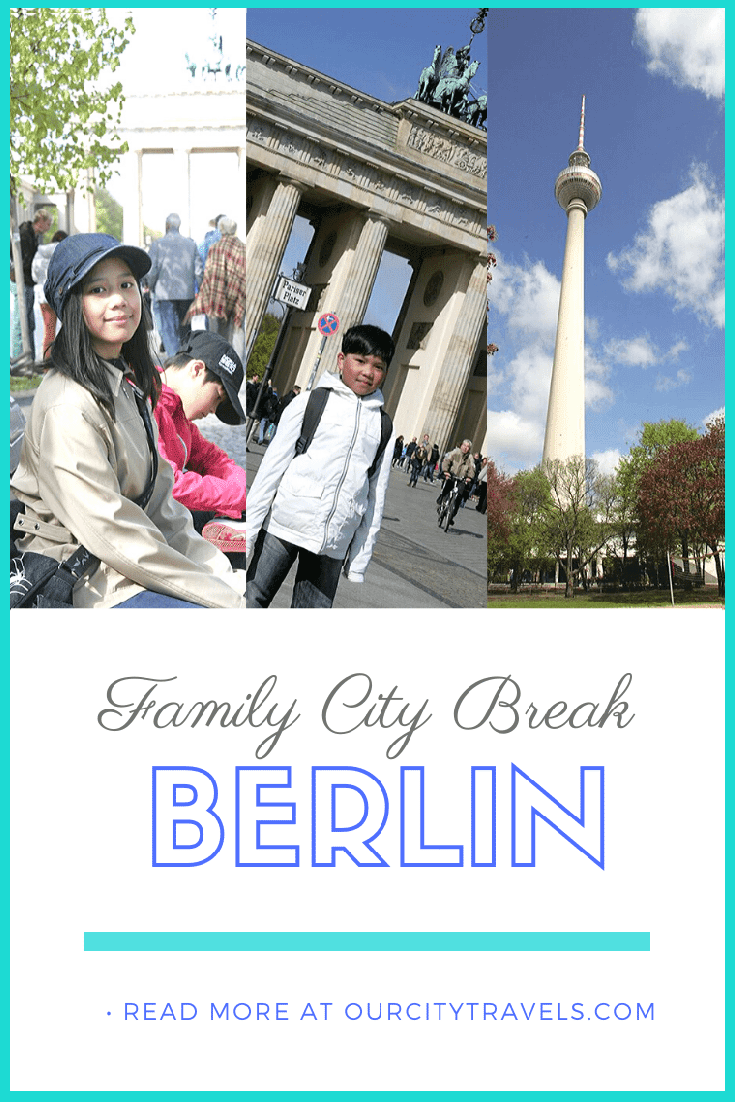

.jpg)


